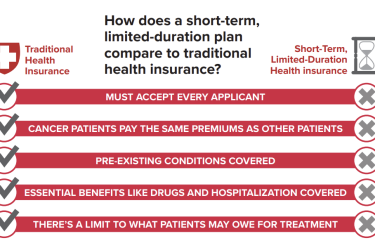
Two fellow AHCJ core topic leaders, Susan Heavey and Joseph Burns, have looked at aspects of the recent census report that documents a sharp decline in the uninsured rate. (Susan’s look at poverty and gender is here and Joe’s overview is here).
It’s also worth taking a look at four points made by Margot Sanger-Katz in a recent New York Times Upshot post.
The ACA didn’t degrade employer-sponsored insurance: Could that happen in the future? Possibly but there really isn’t much sign of it. Between 2013 and 2014, according to the census data, employer-sponsored coverage was stable.
More middle-class consumers stayed on the Obamacare sidelines than the poor: Pre-ACA, the uninsured rates were highest among lower-income people. Between Medicaid, premium subsidies and cost-sharing subsidies, insurance and health care became a lot more affordable for lower income people who are at or above the poverty line. But for the middle class, which received slimmer premium subsidies based on a sliding scale, ACA insurance take-up was lower.
As Sanger-Katz notes, “There were fewer middle-class people without insurance to begin with, but the numbers still suggest that new options may be unappealing or out of reach to people earning higher incomes.” This is part of why affordability is getting so much attention from politicians across the spectrum.
Medicaid made a difference: You’ve heard this before but the census provided additional confirmation: the uninsured rate dropped more in states that expanded Medicaid than those that did not. And in a less obvious finding, the “effect appears to travel up the income scale, too,” she writes. Even people who were above the Medicaid income level were more likely to get health coverage in expansion states, perhaps because those states made a more concerted and effective outreach.
Enroll America’s data-driven mapping was “pretty accurate”: The White House-allied enrollment group and Civis Analytics had used campaign-style data tools to figure out who had benefited the most from the health law’s coverage expansion. It predicted, and the census confirmed, that coverage improved disproportionately among blacks, Hispanics, young people and poor people. (It was less accurate in predicting which states would do the best – and the worst.)







